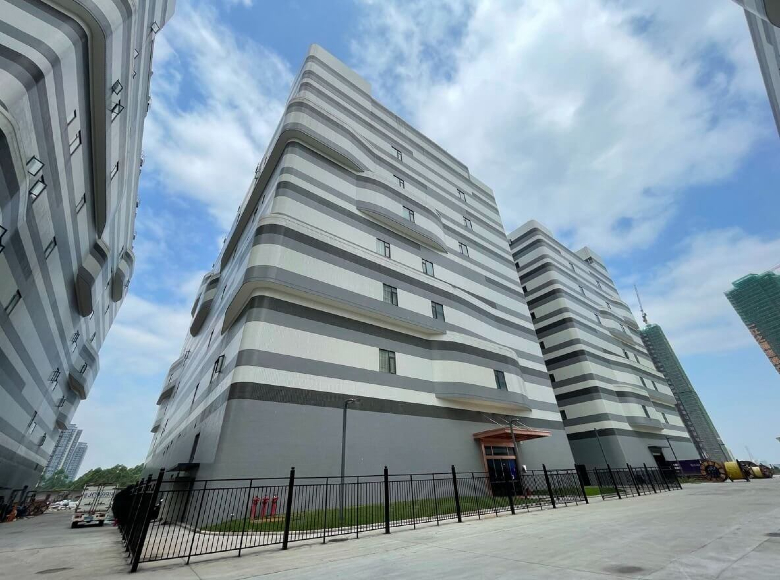
Keppel last year acquired its first mainland China data centre in Guangdong province
Singaporean conglomerate Keppel Corp has achieved a $1.1 billion final closing of its second data centre fund targeting investments in Asia and Europe, including a $150 million commitment from China’s Asian Infrastructure Investment Bank.
The Beijing-based development bank is contributing $100 million through a parallel fund structure and $50 million through co-investments to Keppel Data Centre Fund II, according to a Friday announcement by Keppel Capital, which manages the closed-end vehicle under its Alpha Investment Partners private fund management division.
In addition to AIIB’s share, KDC Fund II attracted investments from sovereign wealth funds, financial institutions, insurance funds and pension funds as it surpassed its target size of $1 billion. The fund works in concert with Keppel Data Centres, a sister division of the conglomerate, to capture investment opportunities in greenfield and brownfield assets, tapping the latter’s expertise in developing, operating and maintaining data centres, Keppel Capital said.
“Data centres form the foundation of the digital economy which underpins almost every aspect of modern life today,” said Alvin Mah, CEO of Alpha Investment Partners. “We are pleased to welcome Asian Infrastructure Investment Bank as an investor and look forward to strengthening our partnership through the Keppel Data Centre Fund II, which is seizing opportunities arising from the burgeoning demand for quality data centres.”
Emerging Asia in Focus
KDC Fund II is the follow-up to the 2016-vintage Alpha Data Centre Fund, which has acquired or developed facilities in Singapore, Malaysia, Indonesia, Germany, Australia and China, where the vehicle invested RMB 1.5 billion ($213.7 million) to develop a greenfield data centre in Guangdong province.

Alpha Investment Partners CEO Alvin Mah
The first fund got a boost in 2017 with a $350 million capital commitment from the Canada Pension Plan Investment Board, bringing the total equity raised to $1 billion — double the fund’s original target of $500 million.
This time round, Keppel has drawn on the resources of AIIB, a multilateral development bank founded in 2016 and boasting 105 members worldwide and $100 billion in capital.
With the acceleration of 5G technology during the COVID-19 pandemic, the China-headquartered bank has made digital infrastructure a key pillar of its investment strategy. The commitment to KDC Fund II marks AIIB’s first data centre investment.
“Our partnership with KDC Fund II and Alpha will foster the development and enhancement of hard digital infrastructure to bridge the digital divide by mainly investing in co-location data centres that mostly serve emerging Asia,” said Dongik Lee, AIIB’s director general for the Region 1 banking department.
Funds Flock to Bit Barns
Keppel Capital, which had S$37 billion (now $27.5 billion) in assets under management at the end of 2020, has raised its second data centre vehicle as Asia Pacific digital infrastructure strategies become a dominant theme in fund manager repertoires.
Last August, Hong Kong-based private equity firm PAG hired industry veteran Kris Kumar to lead a startup focused on co-location, cloud, hyperscale and enterprise data centres, as well as network and fibre assets, throughout APAC.
In July, Hong Kong’s Gaw Capital Partners had announced the hiring of former Keppel Data Centres strategist Kok-Chye Ong to lead its server-hosting platform in Asia ex-China, aiming to expand on the success of the the family firm’s data centre investments in China, where Gaw has committed $1.3 billion since 2019.
A few weeks after that news, Gaw launched a Singapore-based joint venture company, Data Center First, with a project in the nearby Indonesian city of Batam, marking the firm’s first investment in its Asian data centre platform outside of China.
Also last July, Japanese finance group Mitsui won backing from the Canada Pension Plan Investment Board to invest in developing hyperscale data centres in Japan. The $397.4 billion Toronto-based giant committed $319 million to the Japanese Data Centre Development Fund, as the partners seek to meet the information requirements of Asia’s second-largest economy.
Leave a Reply